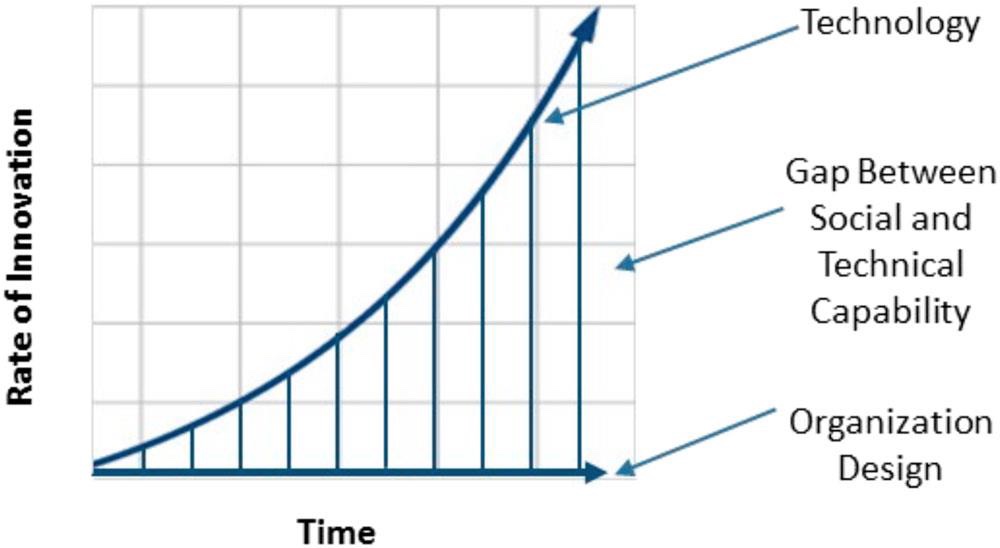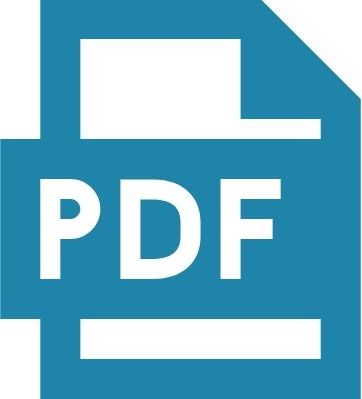Reading Time: 15 minutes
The science and practice of Organization Design is currently going through a significant shift, driven by digital technology, rapid change, and disruption. These changes in Organization Design are impacting HR policy and practices. Below is a brief overview of some of most significant trends.
Technology Lead / Organization Lag
It is not uncommon to find high tech firms with fifth generation technology and second or third generation organization design models. For decades organizations have used a few basic organizational forms like the functional structure, multidimensional organization (business units, geography, customer segments), and the matrix structure. Then came digital technology – and the emergence of new organizational forms such as scaled agile frameworks, platform organizational models, ecosystem models, and the gradual decline of the hierarchy to self-organizing structures and work systems. Even in today’s traditional legacy organization employing digital technology, functional structures are experimenting with agile methods and next generation socio-technical designed work systems.
Flatter, faster, and leaner. Established companies recognize that digital technologies can help them operate their businesses with greater speed, lower costs, more flexibility and, in many cases, offer their customers opportunities to co-design and co-produce products and services. Moreover, digital technologies make it possible for members of an organization to self-organize and thereby avoid the delays, distortions, and other damaging effects of hierarchically organized systems1.BRIEFis a publication of SPRING Network – a community of practice of leading practitioners / academic scholars in the organization strategy and design field.

However, despite continuous technology innovation driving a shift from an industrial to information-based economy, organization design innovation has been slow to innovate and has held on with industrial-based models. Current mind-sets of the traditional hierarchical forms of organization persist in the face of their inability to adapt. The field of organization design contributes to this mind-set with a standard top-down “strategy-structure” design methodology compared to bottom-up “open-systems” design methods.
To address the technology lead / social system lag issue in 2017 we launched an action research effort called STARLabs2 (Socio-Technical Action Research Lab) by assembling 30 plus thought leaders for a two-day design lab session in the Silicon Valley. Next, in 2018 and 2019 we gathered 40 mid/senior level executives at nine companies that represent a broad range of industries, including manufacturing, energy, technology, financial services, fast-moving consumer goods, and healthcare, who recently initiated large-scale digital transformations.
Data from the STARLab action research, review of recent research literature, and direct company project contact suggest the following impressions of organization design trends and implications for HR.
What are some of the trends in organization design?
Ambidextrous organizations where optimization and innovation are balanced.
Executive structures are increasingly being designed to have a balanced optimization-innovation organizational capability. In the ambidextrous organization3 design resource allocation, ROI, organization design, operating cadence, success metrics all get aligned with the priorities and deliverables of either innovation or performance. Business unit P&Ls are designed for optimization and performance; staff functions designed for productivity to enhance margin and performance of P&Ls; Incubation unit to create product extension innovations and disruptive innovations; and a go-to-market capability to bring new products/services/ innovations to market with fast scale. Increasingly traditional organization are employing agile self-managing work systems where a balance of optimization and innovation are desirable or required. Leadership, however, is the key variable to make the ambidextrous system work. Leading and managing innovation requires a vastly different set of competencies and metrics compared to optimization.
From hierarchy to self-management
There is an unmistakable trend away from “being managed” towards self-management. Companies are increasingly reducing middle management and moving towards greater self-organizing work systems, with only minimal use of hierarchical mechanisms to achieve control and coordination4. In new organizational forms information is shared about opportunities and threats which enables problem solving, decision making and reconfigurable adjustments. So top-down management orders are out, and information is in. Work is being organized into “unit operations” where cross-functional players are organized into a work unit with a common set of metrics and customers. The Digital protocols, processes, and infrastructures replace traditional hierarchical means that connect and guide people in teams. In essence, organizations are getting flatter, organized into cross-functional self-managing work systems with a common customer and set of metrics, coupled with digital processes which empowers self-management and less hierarchy. These work units are operating like small businesses.
Agile processes embedded in organization design
Agile is not an organizational form but a way to organize projects. However, digitally orientated organization designers will likely start from a bottom-up, customer-driven, operating system for work design, rather than the traditional top-down strategy – structure method. The bottom-up approach better supports the high degree of organizational agility required to thrive amid increasingly rapid change and disruption, and better reflects the fluidity of modern work and working arrangements. The bottom-up approach leads to flatter, agile self-managing structures that are optimized for social-technical integration, compared to top-down design methodologies resulting in hierarchal structures. Spotify is a good example of a scaled agile organization design.
People – Technology joint optimization
Artificial Intelligence, robotics, and digital-based processes are currently being deployed in organizations around the world at an increasing rate. Implementing new technology always offers the opportunity to design a new organization. This is an opportunity to redesign work for people-technology optimization – where people’s roles/jobs and technology are mutually reinforcing, designed in tandem, and integrated. People-technology optimization creates human and machine collaboration, improves technology investment ROI by exploiting the functionality of the technology through people, and tapping the creativity and innovation of humans.
Reconfigurable organizational design
In a continuously changing business environment new organization forms embed continuous change in the organization design. Sometimes this is done with modular design, where the interfaces are designed to create coordination between modules. Modularization occurs when a product consists of components that interface with other components that can easily be recombined, and teams can work on individual modules without having to worry that their work will impact other teams, as the interfaces between the components are not affected. Also, teams are designed where on-going information is provided from customers to allow continuous problem solving, innovation and adjustment.
Given these trends in organization design what are the implications for HR?
Building internal governance models
An organization consists of not only structure which shows work units and teams but requires an internal governance structure to tie together work units and teams. Internal governance ensures priorities are met and choices are made, resources are allocated, activities are coordinated, monitoring is implemented so the organization adjusts to changing circumstances and strategic control is maintained. Because of the increase in emerging organization design trends and forms there has equally been an increase in new governance models that require innovative HR policies and practices. One example is the Netflix approach to HR where top talent and building context (information about vision, strategy, and customers) support self-managing structures. Reward structures trend for “gain sharing” type group based rewards to reward team cooperation and performance.
High levels of self-management cannot be achieved without decentralized decision making. An objective of these new internal governance models is to consistently push capability into the team system – information, skills, knowledge, and decision making. Capability is not attained if not all four areas are developed in the team. The Spotify model team members report to the chapter lead, who is responsible for skills development and knowledge exchange.As mentioned earlier, leadership competencies are critical for both ambidextrous organizations as well as flatter self-managing work systems. In self-managing work systems leaders are successful based on creating team based self-regulating capabilities and creating unique relationships with customers and members of the ecosystem.
Deconstructing jobs and jobholders
What happens when your organization tries to digitize, automate, or implement alternative work arrangements? If the work is bound up in a job, and the worker is bound up as a jobholder, then your options are limited, and many solutions are obscured. Equally obscured are the specific skills gaps, because trying to match a job to a jobholder obscures the relationship between changing work and the specific skills of those who might perform the work. The task of HR is to continuously reexamine what a job really is, and then provide the tools for identifying the pivotal performance value of tasks within jobs and how these tasks should be reconstructed into new, more optimal combinations5. These new socio-technical work design methods to achieve joint optimization between people and technology need to be employed in the digital workplace.
Vision and value-driven
Despite the differences of organizational forms there is agreement around the increased importance of vision and values. A clearly articulated vision can replace traditional mechanisms by which strategy is implemented. The new approach is to articulate and share a vision and then work towards its realization iteratively. Values serve as establishing the cultural norms in working in a digital environment. The trend is to establish a working vision and a set of core values to guide decision making where strategy can change on an on-going basis.
Actions for consideration:
1. Review the value proposition to understand customer benefits and differentiators.
2. Start the org design process with workflow variance analysis and customer journey mapping. Determine key members of the ecosystem.
3. Assemble co-creation design teams (customers, ecosystem members, employees, etc.) to remove variance, define improved customer experiences, and determine digital solutions.
4. Redesign work into self-managing units with joint optimized roles/jobs. Ensure all structural properties of the work system are in place like continuous environmental, customer, and performance data feedback. Create healthy deliberation processes for fast, data-based decision making, action, and reconfiguration as needed.
5. Create new governance structure to support new work system and introduce new innovative HR policies and practices that support the self-managing model.
6. Ensure the right leadership talent and competencies are in place to support the new work system. Consider this a prototype to scale to other areas of the organization and continue to adjust and refine a new work system for high performance.
References
1 Charles C. Snow, Øystein Devik Fjeldstad and Arthur M. Langer. Designing the digital organization. Journal of Organization Design (2017)
2 The STARLab Alliance is a non-profit learning consortium focused on creating next generation organization design and leadership models. The Digital Organization Design STARLab is a year-long learning experience that allows participants and subject matter experts to collectively explore and prototype practical and innovative responses to digitalization. STARLab participants include 3-6 senior leaders each from 10 companies, well-into the digital transition of their business models, who will partner with leadership and organization experts. The STARLab accelerates learning and creates organization design solutions that optimize the application of advanced technologies and human capital approaches to achieve agility and sustainable effectiveness.
3 O'Reilly, Charles A. and Tushman, Michael, Ambidexterity as a Dynamic Capability: Resolving the Innovator's Dilemma (March 2007). Stanford University Graduate School of Business Research Paper No. 1963, Available at SSRN: https://ssrn.com/abstract=978493 or http://dx.doi.org/10.2139/ssrn.978493
4 The Vanishing Middle Manager. February 5, 2021 | Podcast. McKinsey Insights - McKinsey & Company, 3 World Trade Center, 175 Greenwich Street, New York, NY 10007
5 Jesuthasan, Ravin and Boudreau, John, Reinventing Jobs: A 4-Step Approach for Applying Automation to Work.
Find out more information about the STAR Lab Alliance.
BRIEF is a publication of SPRING Network – a community of practice of leading practitioners / academic scholars in the organization strategy and design field.


